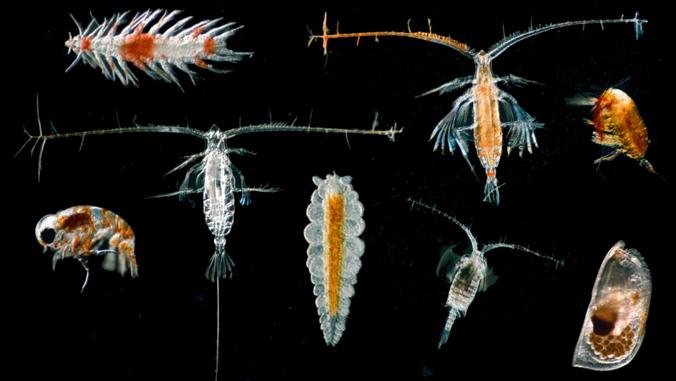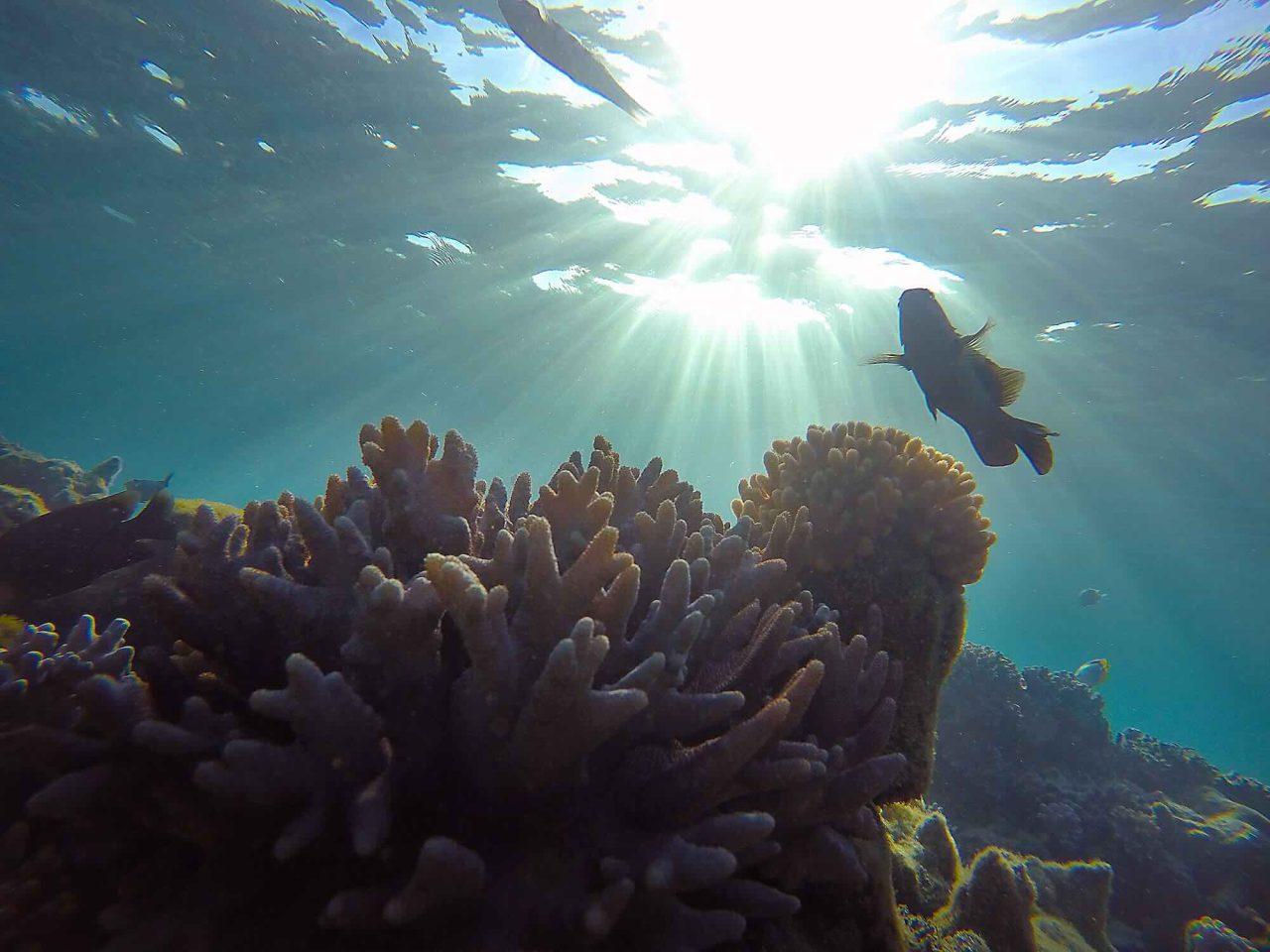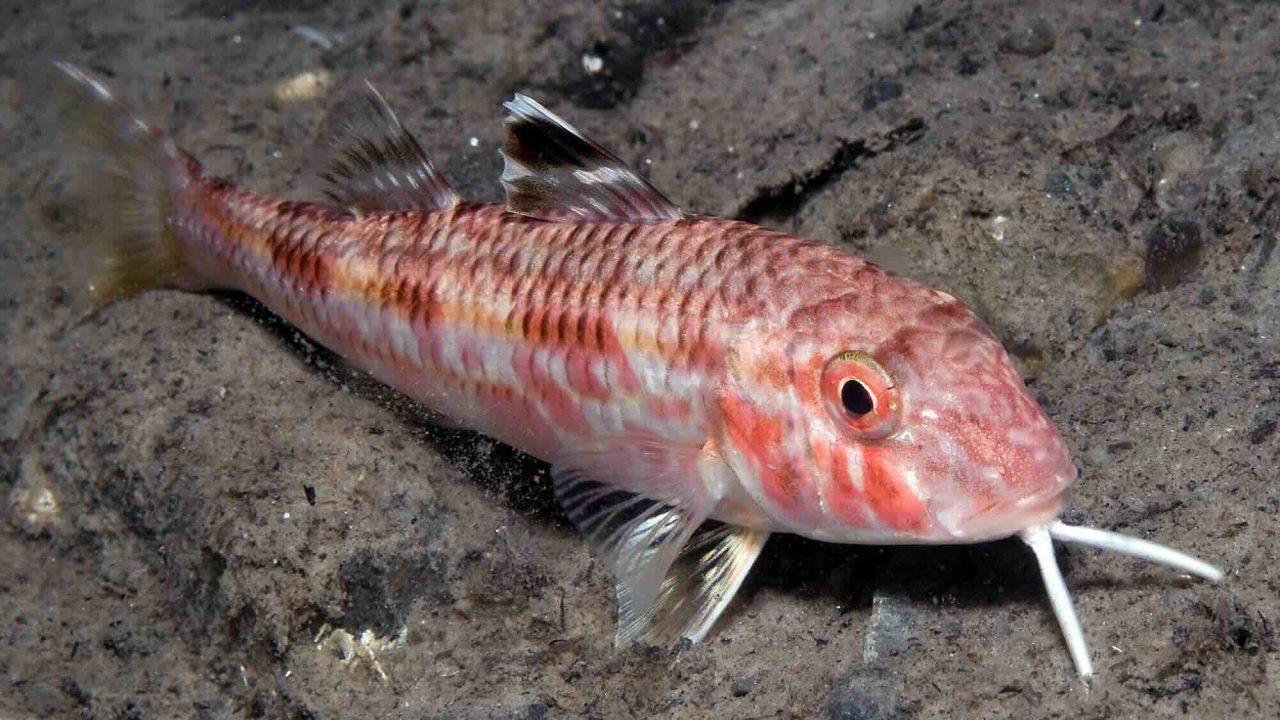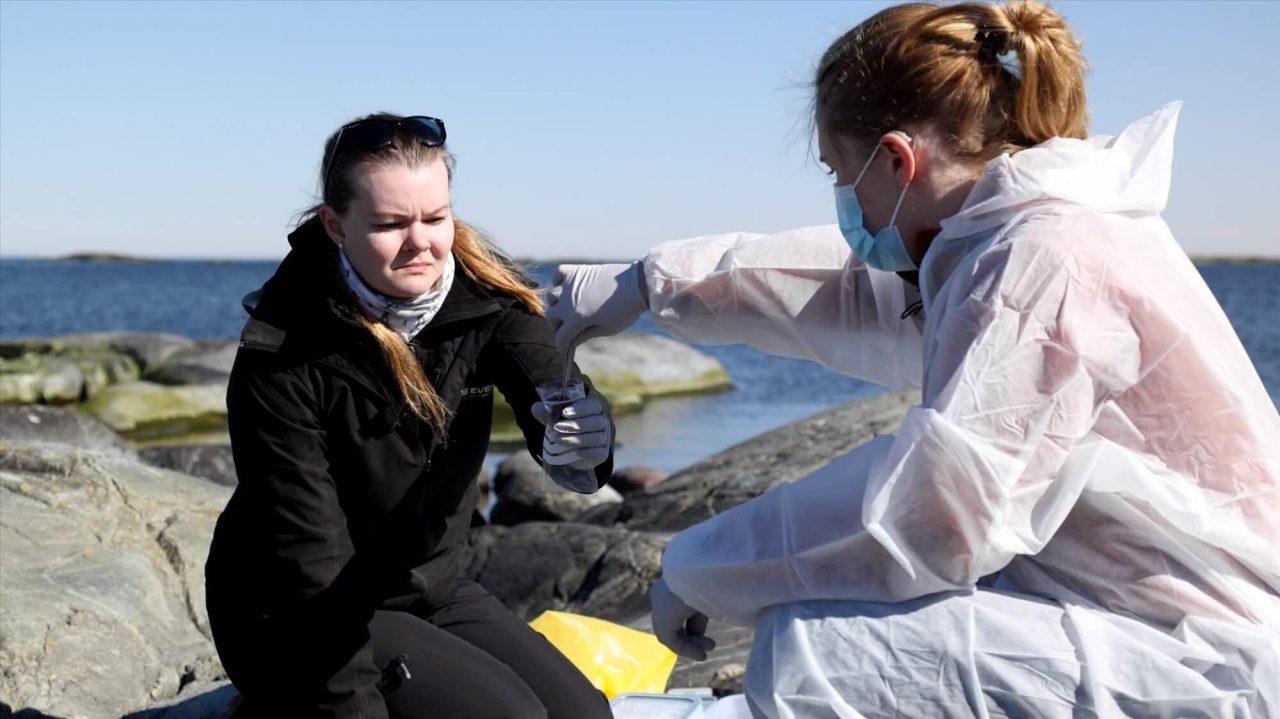Fish behavior, toxic algae, and the role of the sea in climate. These are some of the topics that marine research can address. Diverse subjects, but with a common goal: to better understand what happens beneath the surface.
The oceans cover more than 70 percent of the Earth’s surface. Despite this, we know less about what happens in the ocean than in space. Marine research is about trying to fill these knowledge gaps. Increasing the fundamental knowledge about the ocean without directly pointing to any application is usually called basic research. But sometimes, basic research sparks thoughts on how the knowledge could be applied in society. Then, basic research becomes the foundation for so-called applied research that aims to solve a problem with direct benefits for society. Since the connection between humans and the sea is so significant, it is not uncommon for research projects to shift between basic and applied research.
The oceans are studied by a multitude of researchers in physics, chemistry, biology, and geology. All these subjects can be linked to oceanography, which is the study of the movements and properties of the sea. This is usually done through observations from expeditions, satellites, and the creation of models. Understanding the movement of water is crucial because it affects the climate worldwide.
Many oceanographers work on environmental, energy, and climate issues in government or the private sector. As an oceanographer, one can also engage in research. Oceanography is a science with a broad spectrum of topics such as ecosystem dynamics, ocean currents, and the flow of various substances in the sea. One who has dedicated her life to the sea is the oceanographer Sylvia Earle, who has become one of the internationally known forces for protecting and restoring the world’s oceans.
Oceanography differs from marine biology because it does not always involve studying what lives in the sea. A marine biologist focuses on living organisms in all parts of the ocean and seeks to understand dynamic interactions on different scales, from a specific location to global.
To understand the complexity of the ocean, oceanographers and marine biologists often combine several fields such as biology and chemistry. Weighing in multiple disciplines is particularly important today to create a comprehensive picture that can contribute to the efforts against climate change, pollution, and other factors threatening the oceans and marine life.
Since many places in the ocean are relatively inaccessible to researchers, technological measuring aids are often used today to study these areas. They can remain in the sea and keep measuring the water’s characteristics around the clock. This makes it easier to obtain more measurement values than if researchers had to travel to the measurement site for each reading.
Oceanographic measurement stations at sea are sometimes called ocean observatories where relevant data is collected for researchers. This can include temperature, salinity, and oxygen levels, as well as wind and waves. The Voice of the Ocean (VOTO) Foundation, for example, works to facilitate data collection for researchers. The team working on research and data collection at VOTO consists of oceanographic technicians and researchers. They use so-called gliders to collect data from five locations along the coast of Sweden, and this information can be closely followed through their observation portal.

Researchers at the University of Hawaii have studied how the marine ecosystem is affected in the Clarion–Clipperton Zone in the Pacific Ocean, where mining is currently being tested. The report shows that sediments stirred up by mining disrupt the food chain.

The seabed in Byfjorden on the Swedish West coast is completely dead below a depth of 15 metres. Limited water exchange, which means that oxygen is quickly consumed, combined with old sins from the Uddevalla shipyard, which has accumulated large amounts of heavy metals in the bottom sediments, has made life almost impossible down there. But a new project is bringing life back to the dead seabed.

The world's largest environmental network, IUCN, has this week adopted motion 061 at its international nature conservation congress, calling on states to recognise ecocide, i.e. large-scale environmental destruction, as a serious crime under national and international law.

All parts of the oceans are under triple attack, according to the EU's Copernicus Climate Service's major annual ocean report. ‘These changes affect us all – ecosystems, society and the economy,’ says oceanographer Karina von Schuckmann.

In June 2025, Coral reef researchers, Sylvia Jageroos and Didier Zoccola dived the coral reefs of the Bikini Atoll, observing the coral reef ecosystems, identifying corals and collecting samples. Close on 80 years after American nuclear tests devastated the Atoll, they discovered a surprisingly resilient and healthy ecosystem and will now be able to further analyse their findings to determine whether they have found coral species that are unusually resistant to the effects of climate change. Nästan 80 år efter att amerikanska kärnvapenprov ödelade atollen är det ett överraskande motståndskraftigt och friskt ekosystem de hittar. Tillbaka i labbet ska de analysera fynden för att se om de har hittat korallarter som är ovanligt motståndskraftiga mot klimatförändringarnas effekter.

Does it make any difference to cod whether they are caught by a hook in their mouth or by a net? Off the Norwegian coast, researcher Marco Vindas and his team are lowering cages, nets and longlines to find the answer to that question. Which fishing method is worst and which is best – for cod? Now he has the answer.

One of the world's most common organisms is threatened by rising sea temperatures. The amount of the most common type of cyanobacteria (prochlorococcus) is at risk of being halved unless climate change is slowed down.

For several years, there have been warnings that pike stocks are declining in the Stockholm archipelago. Now, according to new test fishing, there is a clear reversal of the trend. Pike may be making a comeback.

Even the ancient Greeks held the yellow-striped mullus – or, in short, the mullus – in high regard. With rising sea temperatures, it has been appearing on the Swedish west coast in autumn for several years now. However, spawning and reproduction have never been recorded in Swedish waters. But there are many indications that the mullet can now be considered a resident and reproducing species. Many shallow bays along the west coast have been swarming with its fry this summer.

The government report ‘Modernised Fisheries Legislation,’ which was submitted to the Swedish government last week, will enable major changes for recreational fishermen in Sweden. Among other things, it proposes mandatory catch reporting when fishing in state-managed waters. Göran Sundblad, a researcher at SLU, runs the Spöreg project – an app where anglers can voluntarily report their catches for research purposes.

When researchers talk about ‘missing data,’ they are referring to replacing previously estimated values with actual, real values in various explanatory models. This can be particularly important in climate change models. Even though approximate values provide a good picture of future climate change, the more reliable the measurement points are, the more robust the model becomes.

Every year, a small group of harbour porpoises traverses a narrow strait from the Black Sea to the Sea of Asov, then returns again, in a natural migration cycle. Since prehistory, these Black Sea porpoises have been isolated, evolving separately from other porpoises, becoming smaller, but with larger snouts. They’re sleek and cute, with eyes and mouths that have the perpetual hint of a smile.

Security is tight as the Baltic Sea gets its largest offshore wind farm, just a few nautical miles from Kaliningrad in Russia. “We must be ready,” warns the Polish government.

Elina Thorsson works at the Swedish National Veterinary Institute (SVA) as a wildlife pathologist. - In my profession, the primary focus is on disease surveillance in wild animals. Often, we know nothing about the animal; we only know that it was found dead. And we have to find out why.

Far out on the islands of the Stockholm archipelago, Elina Thorson and her team from SVA (the Swedish National Veterinary Institute) collect samples from dead seals to find out how the seals are actually doing. The question is what impact climate change and reduced ice cover are having on their health. Better than expected, as it turns out.

In a uniquely large study, researchers have been able to show how and where sea turtles, whales, albatrosses, and other marine animals travel in the oceans and gather along coastlines. This knowledge provides important information for decisions on which marine areas should be protected first.

You can't see it above the surface, and that's a big problem, because what's happening below the surface is like an ongoing disaster. Until now, the ocean has been our great savior, absorbing almost all the excess energy we've released. But there's a limit to what the ocean can absorb, and it seems like we've exceeded it now.

Both the spiny dogfish and the small-spotted catshark appear to have increased along the Swedish west coast. At the same time, we know that stocks are still low from a historical perspective.

Edy Setyawan, PhD in manta rays, grew up in a small mountain village in Java. Today, he stands among the world’s leading researchers on manta rays and sharks. He has published a remarkable body of scientific work, co-founded an Indonesian-led NGO dedicated to elasmobranch conservation, and was the first to conclusively identify a manta ray nursery habitat in Wayag, Raja Ampat – along with multiple other potential nursery locations throughout Raja Ampat.

Everything we do in the high sea, risks causing damage that cannot be repaired. That's what a group of leading scientists say in a recent article published in the journal Nature. They say it's damaging biodiversity, affecting the climate, and creating huge inequalities in how resources are shared. It is time, they write, that we decide to save the ocean.

Few fish species are as interesting as sharks and rays. These ancient cartilaginous fish have existed and evolved in the Earth's oceans for nearly 400 million years. The Swedish species are no exception. They also attract attention and amazement.

We have better maps of the moon than of the ocean floor. But a partly Swedish-led initiative has now collected data covering a quarter of the deep oceans. ‘There is still a lot undiscovered down there,’ says researcher Martin Jakobsson. - ‘There are surprises in the form of very large volcanic peaks sticking up. You can definitely find something similar to the Kebnekaise massif.

US President Donald Trump has put the axe to the US National Weather Service (NOAA). The hijacking affects both international climate research and local forecasts, experts and staff warn. - It will cost us many lives, a former senior manager told TT.

We have known for a long time that whale poop fertilises the ocean and helps mitigate climate change by sequestering carbon in the ocean. But when they eat in one place and then pee in completely different places, it can be even better for the sea because they then spread fertiliser over otherwise nutrient-poor areas.